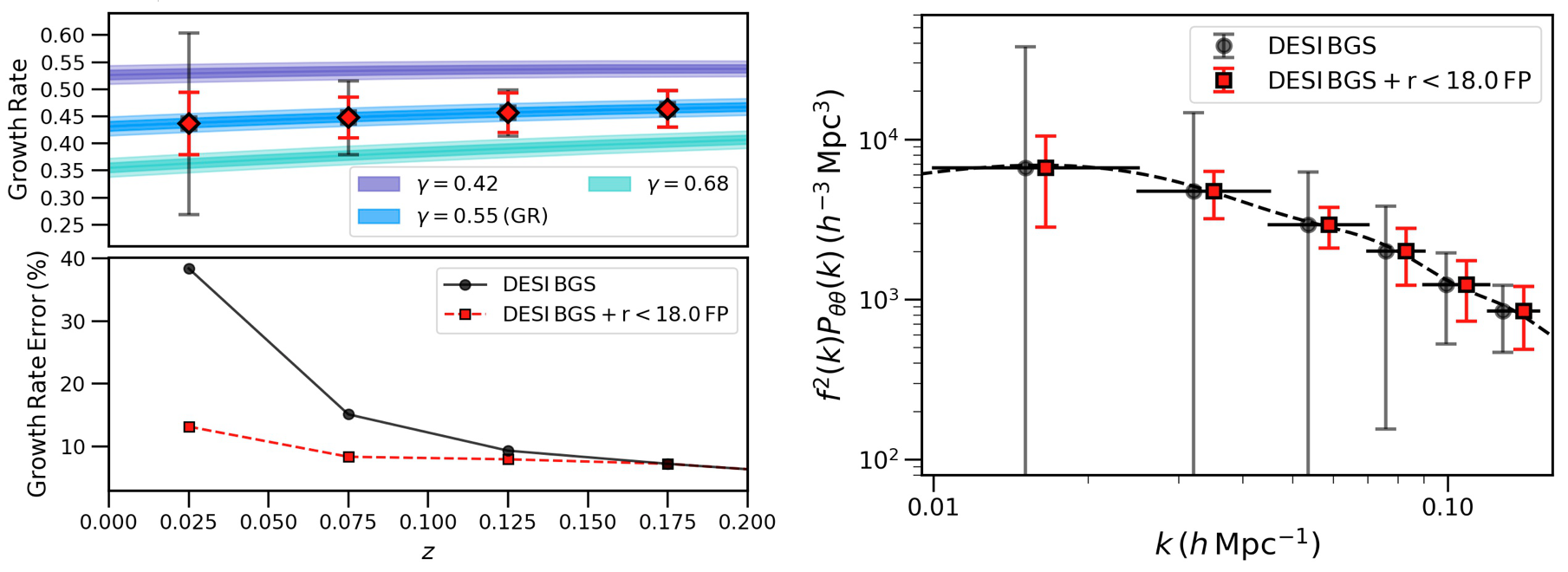Christoph Saulder, Postdoc at KASI
October 11, 2021
While the main goal of DESI is to obtain spectroscopic redshifts for millions of galaxies to map the expansion history of the universe, there are also secondary targeting programs that supplement the main DESI survey and its science goals. The DESI peculiar velocity survey is one of these programs and it aims to improve the measurements of cosmological parameters in the local universe.
And yet it moves…
Even when accounting for the expansion of the universe (“Hubble flow”), galaxies do not sit around idly, but move around due to their mutual gravitational interactions. These proper motions, which are refereed to as peculiar velocities in our context, encode information about distribution of matter. By default, DESI measures the redshifts of galaxies, which are a combination of the cosmological redshifts caused by the expansion of the universe and the redshifts caused by peculiar motions. As the cosmological redshifts correlate with the distances to these galaxies, one can use redshift-independent distance indicators in combination with the redshift measurements to obtain the (radial) peculiar velocities of these galaxies. As we want to measure the peculiar velocities for a large number of sample, we cannot wait for a rare supernova type Ia to go off in each of them and most of them are too far away for us to resolve any Cepheids variable stars. We therefore have to rely on less precise, but more easily accessible redshift-independent distance indicators, such as galaxy scaling relations, in particular the fundamental plane and the Tully-Fisher relation. These allow us to measure the distances, and thereby the peculiar velocities, to a large number of galaxies in the local universe (redshift of less than 0.1).
Still waters run deep…
Which scaling relation a galaxy obeys depends on its morphological type. Galaxies with essentially no cold gas and therefore no ongoing star-formation appear as the relatively boring looking elliptical galaxies. These quiescent galaxies follow the fundamental plane, which relates the internal kinematics of these galaxies express as the central velocity dispersion to their surface brightness and physical size. By comparing the physical size predicted by this relation to its angular size on the sky, we are able to obtain the distance to such a galaxy by using simple trigonometry. While measurements of the angular size and surface brightness can be done on the already collected data of the photometric DESI Legacy Imaging Survey, we will need spectroscopic data for the central velocity dispersion. The central velocity dispersion quantifies the statistical dispersion of the motion of stars in the center of a galaxy.

In DESI, fibers collect spectra from the innermost parts of these galaxies. In these spectra, the central velocity dispersion manifests as broadening of the spectral lines. However, to reliably recover these features, one needs spectroscopic data of excellent quality. Luckily most of our targets are bright galaxies, which are masked areas that within there are no high redshift galaxies targeted in DESI during dark time (best observing conditions). This means our additional observations have only little competition and over the course of the DESI survey, we will be able to gather data we need without interfering with the main DESI observations.
Round and Round it Goes…
The maximum rotation velocity of spiral galaxies is tightly linked to its absolute luminosity via the so-called Tully-Fisher relation. By comparing the predicted absolute luminosity to the observed apparent luminosity from DESI Legacy Imaging Survey, one can derive the distance to these galaxies. The maximum rotation velocity can be measured by placing fibers along the semi-major axis of the galaxy and just comparing the measured redshifts at these locations. As our targets are big and bright galaxies, the geometry of DESI often even requires fibers to placed somewhere on these galaxies, so we made sure that they will end up on the best possible location to maximize our science output.

The answer to life, the universe, and everything
While it seems to be simple, getting from redshifts and redshift-independent distance measurements to peculiar motions, it requires a lot of careful modeling of all kinds of biases and selection effects. In the end, we want to obtain solid measurements for cosmological parameters from the data. Peculiar velocities can supplement the measurements on the growth of structure that are usually from redshift space distortions and we can thereby can get tighter constraints on the cosmological parameter f σ8 , also refereed to as the growth rate (of structure). Its evolution over time and its scale-dependence can used to test for possible deviations from General Relativity. Additionally, by using galaxy scaling relations as distance indicators, we are able to collect data about the kinematics of a large sample of galaxies that will help us to gain better insights into the dark matter halo relation.
Step by step…
We were able to obtain our first measurements using the survey validation data of DESI, in particular the 1% survey. These first results helped us to test and improve our target selection methods, which are now applied to the ongoing main DESI survey. We are currently preparing several publications, which are to be released along with the first public release of DESI data, that will present the details of our target selection methods and the first results from the fundamental plane and Tully-Fisher relation. While data collected so far is sufficient for the basic calibrations of our methods, it will still take years until the survey is completed and we have sufficient data for strong scientific results and the chance of discovering any new physics beyond our current standard model.
